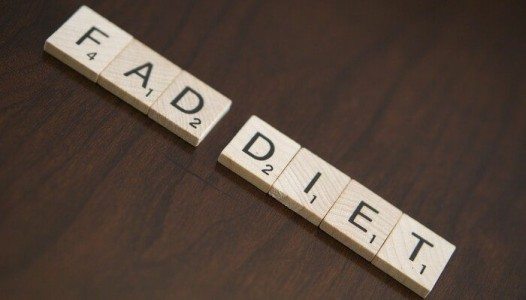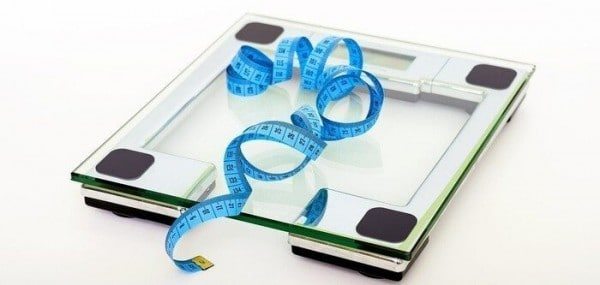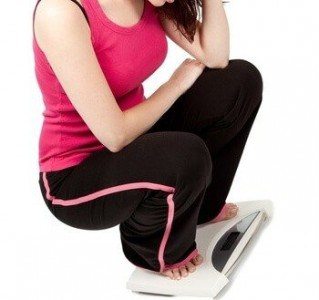
When you were a kid, at some point you probably tried to get away with something by telling your parents that, “Everyone else is doing it.” If your parents were like mine, they probably had a wittier version of, “If everyone else jumped off a bridge, would you?” ready to go.
The psychology behind fad diets seems much the same. “Everyone else” is doing it and losing weight, why not me?
Because the truth is you’re wasting your time and money, and you may be doing more harm than good to your body. Fad diets appeal to the part of us that wants a quick solution to our problems. “Eat nothing but meat for a month, and you’ll lose weight.” Sure.
You will, just as you would lose weight eating nothing but potatoes.
More...
In a Hurry? Jump Links!
- The Fad About Fad Diets
- Paleo Diet Basics
- Paleo Diet Rules
- Caveman Mythology
- Paleo Weight Loss
- Paleo Diet Results
- What a Healthy Diet Looks Like
- The Bottom Line
The Fad About Fad Diets
The problem is, once you go back to normal eating, the weight will return only this time it will bring a bunch of its fat friends. A study cited in Psychology Today showed that a fad diet can help you lose 5-10% of your body weight. However, after 5 years, research shows that 83% of people gain back more weight than they had lost.
Sports nutritionist Matt Fitzgerald, author of Diet Cults, discussed with Julia Belluz some of the reasons human beings are so inclined to fall for fad diets. First, humans have a tendency to find proof that confirms what they already believe.
If you want to believe that, for example, a Detox Diet will magically solve your weight issues, there is enough evidence out there to confirm that belief.
As I’ll explain in a moment, though, there is no scientific consensus on what makes an ideal diet, so it is possible to find proof that any diet can be perfect for weight loss.
Fitzgerald also discusses how even ancient cultures believed in “food of the gods.” Today, when we call a food a “superfood,” we’re doing the exact same thing. We are unintentionally implying these foods come from some divine source.
Alan Levinovitz, assistant professor of religion at James Madison University, also discusses the link between myth/religion and food. He discusses a grain-free diet proposed by monks in ancient China.
The reason that so many followed this diet fad (even though there was no real proof that it worked) is that humans believe in a “paradise past,” which is a myth that there was a time in human history when everyone was happy and healthy.
Then, we started eating the wrong food and everything went to hell.
Paleo Diet followers use this same sort of mythology. They point to the Paleolithic period as the time when humans were eating right. The problem is that clinical studies reveal contradictory, highly contested evidence about what we should be eating (though Harvard compiled a plan based on all research available. I provide it below).
Dr. James L. Hardeman, author and a pulmonary and critical care physician, explains why restrictive diets don’t work in the long run. He explains that these diets “eliminate food groups… which make the diet incompatible with modern food culture.”
He goes on to say that, “for those who can live with these limitations it is fine, but for the majority of people, we need something that is effective.”
And this brings us to one of the latest fad diets: The Paleo Diet.
Paleo Diet Basics
The documentary The Perfect Human Diet examines the basics of the Paleo Diet. The main idea behind the Paleo Diet is that human beings lived primarily on a diet high in protein and fat for millions of years and that our bodies evolved to best process that sort of diet.
As such, the Paleo Diet recommends the following.
Paleo Diet Rules
- Eat lots of protein: They recommend that at least 19-35% of your calories should be from protein (currently, the average Western diet is around 15%). They argue that, in hunter-gatherer societies, meat, seafood, and other animal products were the staple of the human diet.
- Carbohydrates: 35-45% of the calories you consume should come from non-starchy fresh fruits and vegetables because they contain vitamins and minerals that your body needs. You will want to look for plants with a low glycemic index, as your body more slowly digests these.
- Forget Bread: Dietary fiber must come from non-starchy vegetables.
- Moderate fat intake is fine: You will want to cut trans fats and Omega-6 polyunsaturated fats and increase monounsaturated and Omega-3 fats.
- While the Paleo Diet says you should eliminate salt (because our caveman ancestors didn’t have it), Levinovitz points to scientific evidence that the Japanese are one of the healthiest cultures in the world, but they have the highest sodium intake. This single contradiction shows how little scientific consensus there is about what makes an ideal diet.
- We need to balance our dietary alkaline and dietary acids. Foods that produce acid are meat, fish, grains, legumes, cheese, and salt. Fruits and vegetables produce alkaline. Thus, on a Paleo Diet, these food groups should be about 50-50.
Another way to look at it is this:
Eat
- Grass-produced meats
- Fish/seafood
- Fresh fruits and veggies
- Eggs
- Nuts and seeds
- Healthful oils like olive, walnut, flaxseed, macadamia, avocado, and coconut
Don’t Eat
- Cereal grains
- Legumes (including peanuts)
- Dairy
- Sugar
- Potatoes
- Processed foods
- Salt
- Refined vegetable oils
Caveman Mythology
It sounds like a reasonable assertion. Human beings first appeared about 200,000 years ago and did not start domesticating animals and farming until 12,000 years ago. In fact, members of the Homo genus first cropped up 2.8 million years ago.
This is when we split from our chimpanzee cousins (all of these dates are from a great documentary called Becoming Human). As the Paleo Diet argument goes, we’ve only been eating dairy and certain domesticated vegetables (like the potato) for a very short period of time when compared to the length of human history.
For most of our existence, we were hunter-gatherers who lived off of berries, tubers, and mammals. Thus, there seems to be some credence to the idea that our bodies evolved to eat a high-protein diet without dairy or grains.
The Scientific American article, "Paleofantasy: What Evolution Really Tells Us about Sex, Diet, and How We Live" by Ferris Jabr takes a fun approach to debunking the Paleo Diet myths by describing the ideal follower of the plan: Grok. First, he is the picture of health, and “He and his family eat really healthy, too.
They gather wild seeds, grasses, and nuts; seasonal vegetables; roots and berries. They hunt and fish their own meat… Grok’s life is strenuous, perilous and physically demanding.” Jabr is, of course, describing what we picture when we think of the lean caveman.
Our ancestors were not as healthy as we like to imagine, though. Jabr goes on to site a study that showed many citizens of hunter-gatherer societies had atherosclerosis (clogged arteries), just like us.
Adults only lived to be about 40 and most children died before the age of 15. While they may not have had diabetes, they were riddled with parasites and suffered deadly viral and bacterial infections.
Also, there is no “one” Paleolithic diet. Depending on where a person lived in the world, their diet would be vastly different based on the season and geography. Jabr provides an infographic that shows the Inuit ate meat almost exclusively (90% of their diet).
The !Kung lived mostly on seeds and nuts (60% of their diet) but also had access to milk. The Hadza ate meat and fish (60%), roots (30%), and fruits and vegetables (10%). The Hiwi lived mostly on roots (10%) and meat and fish (80%).
Each group ate all of these things in different proportions, so how can anyone point to a definitive Paleo Diet? And should we even be trying to eat like our ancestors?
The answer seems to be no. Evolution does not work as slowly as the Paleo Diet people would have us believe. In her book Paleofantasy, biologist Marlene Zuk argues that we actually share very little with our “caveman ancestors.”
The idea that we should be eating as humans did in the Paleolithic period is flawed in that it assumes that we finished evolving then. As Zuk argues, though, “everything from adults’ ability to drink milk to the texture of our ear wax” shows that we have not stopped evolving. Have blue eyes? Those only arose between 6,000 and 10,000 years ago.
And that’s just our personal evolution! The bacteria that live inside our bodies have changed considerably in the past 10,000 years.
Interestingly, Zuk (like Fitzgerald and Levinovitz) implies that nostalgia for the past, a time when we knew the “right” way to eat, fuels the belief that the Paleo Diet works.
Paleo Weight Loss
The Paleo Diet can work… in the short term. On The Paleo Diet website, a study, Boers, et al., is linked that acknowledges that, over a two week period, the Paleo Diet helped people lose weight and improved cardiovascular risk factors.
They point to the Melberg, et al. study that showed people on a Paleo Diet were able to maintain results for six months.
However, both studies showed a major issue with the Paleo Diet: sustainability. The Boers study discussed the difficulty patients had in finding food appropriate for the Paleo Diet. The largest hurdle was finding fresh fruits and vegetables throughout the year.
The Melberg study found that, while the women were able to maintain results for six months, they were not able to sustain them for two years.
Thus, the Paleo Diet suffers from the same problem that all restrictive diets do: they’re hard to stick to, and once you’re off the diet, the weight will come back (and, as the Psychology Today article shows, you will likely gain more weight).
You may also be at-risk for other health issues. The National Institute of Diabetes and Digestive and Kidney Diseases says that fad diets may not provide all of the nutrients that your body needs and losing lots of weight in a short period of time can “increase your chances of developing gallstones.”
Paleo Diet Results
I would be remiss if I did not tell you about my friend, Angel. She has type 2 diabetes and had a number of mood issues. While you could never describe her as fat, she was clinically overweight.
She started a Paleo Diet about a year and a half ago. Since then, she has lost weight and her mood has stabilized.
She has mostly been able to stick to the diet, though she does cheat now and again.
There are a few things you need to know about her success, though. First of all, she cooks every single meal. She rarely goes out, as there are very few Paleo-friendly options at most restaurants.
Also, she makes enough money that she can easily afford the higher priced food that one needs to buy to successfully eat a Paleo Diet.
Also, I have to wonder whether or not she would have had the same results on any healthy eating plan.
She went from someone who drank and went out to eat all of the time to someone who does not drink and stays in and cooks most nights.
Could that not be attributable to her results?
What a Healthy Diet Looks Like
If not Paleo… what?
Harvard University’s School of Public Health has an excellent website that provides nutrition information. They put together what is called the “Healthy Eating Plate” in attempt to simplify the USDA’s description of a healthy diet. Here’s what you need:
1. Vegetables and Fruits: These should be ½ of your plate. When choosing fruits and veggies, you want to aim for a number of different colors, as the hue indicates different vitamins and minerals that the plant contains.
According to Beth Fontenot’s article, “Antioxidants Explained: Why These Compounds Are So Important,” the more colors you see, the more nutrients you’re getting.
2. Whole Grains: ¼ of your plate. Whole grains include whole wheat, barley, wheat berries, quinoa, oats, and brown rice. You want whole grains instead of refined grains as they better maintain your blood sugar levels.
Since carbs are so controversial, I think it is important to look at the facts. The problem is not carbohydrates generally, it is simple and refined carbohydrates that are no good. West Virginia University defines these “bad” carbohydrates as “sugar, juices, and starches such as white rice, white bread, potatoes, and pasta.”
Foods high in fiber, like whole grains, fruits, and vegetables, are low in calories and excellent sources of energy.
3. Protein: ¼ of your plate. According to Harvard, there is proof that red meat can increase your cholesterol level, so while you can treat yourself to a steak or hamburger occasionally, you’re better off getting protein from fish, chicken, beans, and nuts.
4. Beverages: Do not drink sugary drinks like soda. Limit yourself to one to two servings of milk each day, and if you absolutely have to have it, you can drink one small glass of juice per day. Otherwise, stick to water, coffee (yay!), or tea.
The Bottom Line
As I mentioned, my friend had excellent results following the Paleo Diet, and there is nothing really wrong with it. Most studies show a high protein diet poses no health risks.
Also, getting fiber and carbohydrates from fruits and vegetables is fine and cutting down on processed foods is great.
The issue is that the Paleo Diet is restrictive. You can’t eat dairy or grains. Can you live a life without cheese and bread?
The major issue is that, as with all diets, the Paleo diet picks and chooses the data that confirms its belief and passes it off as scientific fact. If you are up for a lifetime of protein, fruits, and vegetables (sans bread, dairy, and chocolate), give it a shot.
Just know, as soon as you go back to your evenings of wine, cheese, and crackers, the weight will likely return.
Copyright text 2020 by 5MinuteReviews.com
Important Disclaimer: The information contained on 5MinuteReviews.com is intended for informational and educational purposes only. 5MinuteReviews.com is a participant in the Amazon Services LLC Associates Program, an affiliate advertising program designed to provide a means for sites to earn advertising fees by advertising and linking to 5MinuteReviews.com.

Disclaimer: The information contained within this site is not intended as a substitute for professional medical advice. If you have, expect to have, or suspect you may have any medical condition, you are urged to consult with a health care provider. These statements have not been evaluated by the Food and Drug Administration.
These products are not intended to diagnose, treat, cure, or prevent any diseases or medical conditions. Results are based on 5MinuteReviews.com Ranking System and do not necessarily reflect typical results from the use of these products. Please visit product websites for more information.
FTC Disclosure: We represent a professional research and review team, and on our page you may find affiliate links for which we could be compensated for by clicking on them. https://5MinuteReviews.com is a participant in the Amazon Services LLC Associates Program an affiliate advertising program designed to provide a means for sites to earn advertising fees by advertising and linking to amazon.com.
All logos and names are respective to each company and brand, all registered trademarks and protected images are used under the terms of 'fair use'. Please reach out, we're human too.








